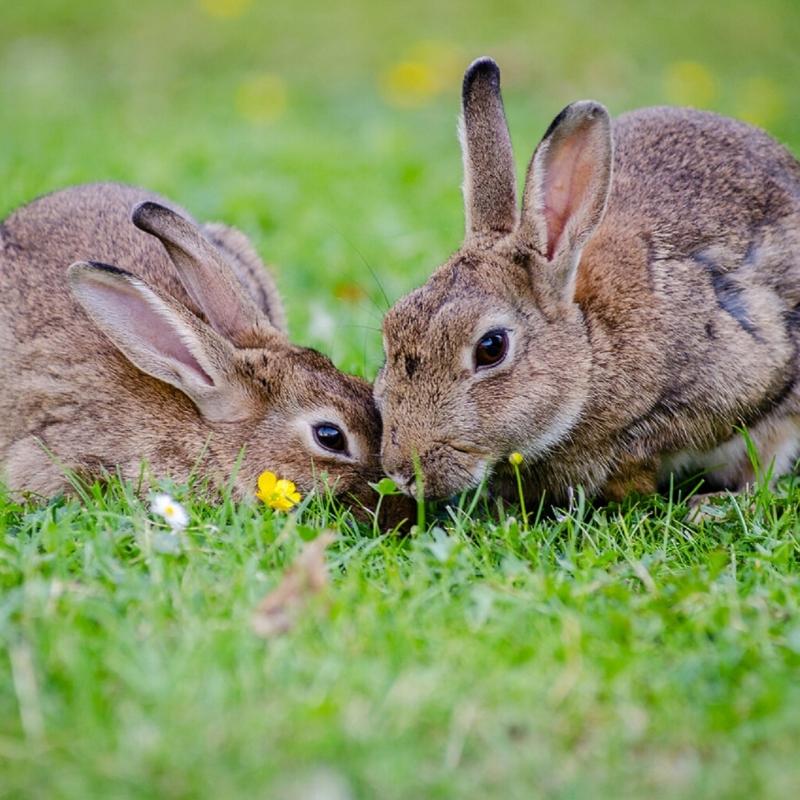Paper published: Myxomatosis seasonality and risk factors

Our latest paper uses electronic health data from veterinary consultations to explore the seasonality and risk factors for Myxomatosis in rabbits. It has been published in Preventive Veterinary Medicine and we were delighted to have collaborated with Dr Anthony Caravaggi at the University of South Wales. We would like to thank Sean Farrell for the work he did for this publication as part of his summer placement (see below).
- Myxomatosis is a highly contagious, frequently fatal viral disease affecting both wild and domesticated European rabbits across many areas of the world.
- Here we used electronic health records (EHRs) collected from pet rabbits attending a sentinel voluntary network of 191 veterinary practices across Great Britain (GB) between March 2014 and June 2019 to identify new features of this disease’s epidemiology.
- From a total of 89,408 rabbit consultations, text mining verified by domain experts identified 207 (0.23 %) cases where myxomatosis was the only differential diagnosis recorded by the attending practitioner.
- Cases occurred in all months but February and were distributed across the country.
- Consistent with studies in wild rabbits, the majority of cases occurred between August and November. However, there was also evidence for considerable variation between years.
- A nested case control study identified important risk factors for myxomatosis within this pet animal population including season, sex, age, vaccination status and distance to likely wild rabbit habitats.
- Female entire rabbits were twice as likely to be a case (odds ratio (OR) 1.98, 95 % confidence interval (CI) 1.26–3.13, p = 0.003), suggesting a novel role for behaviour in driving transmission from wild to domesticated rabbits.
- Vaccination had the largest protective effect with vaccinated rabbits being 8.3 times less likely to be a case than unvaccinated rabbits (OR = 0.12, 95 % CI 0.06-0.21, p = <0.001).a highly contagious, frequently fatal viral disease affecting both wild and domesticated European rabbits across many areas of the world.
Access the paper here
See the infographic summarising this work here
Download our free poster here
Q+A with Sean Farrell
What is your background?
I am currently in my 2nd year of a Biomedical Sciences BSc at the University of Kent.
Why were you working with SAVSNET data?
My project at SAVSNET focussed on Myxomatosis within the domesticated rabbit population, through compiling of SAVSNET data we were able to determine certain epidemiological trends which had not be observed before for example in the tendency for female non-neutered rabbits to be the most significantly affected population. This project represents my first real world use of ‘Big Data’, I have a growing interest in data analysis and viewed undertaking this project as being highly representative of the line of work I hope my career can go into. SAVSNET has significantly increased both my understanding of why ‘Big Data’ is the future of modern medicine in what hidden trends are within health records but most of all has shaped my own career choices.
What pets do you own?
Unfortunately, despite my project being entirely based on rabbits I am ashamed to say that I don’t have any… but I am a dog person! I have a Cocker Spaniel called Cookie that I love to bits!
What were the two most important things you learnt about science?
The most important thing I learnt was the importance of collaboration within these projects, the interaction between multiple academic staff across different universities in producing this project really promotes the concept that Science is not an alone sport and you must ‘stand on the shoulders of giants’ to produce leading research. Of course it is important to conceptualise new ideas of your own but what feels equally as important is in accepting the ideas from others.
Communication of ideas also became highly significant part of my time, I attended regular research meetings on different members of the research groups project gaining a great understanding of what my peers were working on but also in how pitching your current thoughts on your own project can be met with so much thought and further discussion. When I had the pleasure of presenting a meeting myself, I was presented with a wide variety of new ideas and theories that I had overlooked previously or had not even considered.
I cannot thank everyone enough for all the support I received at SAVSNET, although my time at SAVSNET was short I felt so welcomed and immediately made a part of the team. The working environment is incredibly friendly and promotes free thinking, any question I asked or any resource I requested went beyond what I could have ever expected. I owe all the successes within this publication to the help I have received and the people I have met - so thank you!
-173x173.jpg)